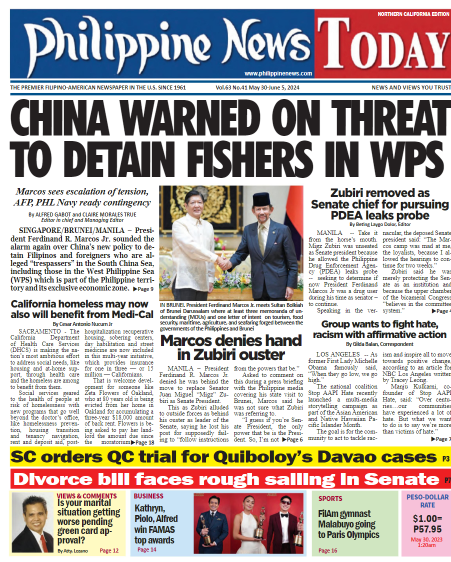EACH monsoon downpour in Metro Manila seems to script the same scene: brown floodwaters surging into homes, paralyzing traffic, and testing the patience of millions.
This year, however, something different is happening—not only in the streets but also in the halls of Congress.
Since the “Mahiya Naman Kayo” statement of President Bongbong Marcos at the SONA, lawmakers are scrutinizing billions in proposed flood-control projects, probing why, despite decades of appropriations, water still overwhelms our cities.
Congress has launched unprecedented investigations into flood-control infrastructure.
The Senate Blue Ribbon Committee and the House Committee on Infrastructure are probing allegations of “ghost projects,” substandard construction, and contractor favoritism—some of which have worsened flooding rather than prevented it.
Witnesses summoned to testify have drawn fierce public rebuke, and some who skipped hearings even triggered arrest orders.
Senator Panfilo “Ping” Lacson called the scandal “Flooded Gates of Corruption,” noting that half of the P2 trillion spent on flood control over the past 15 years may have been lost to graft.
In a rare move, the Commission on Audit (COA) ordered a fraud audit in Bulacan, which accounts for nearly 45 percent of Central Luzon’s contract volume.
Meanwhile, the Ombudsman is assembling a special panel to file administrative and criminal charges.
Amid these hearings, two corporate titans—Ramon S. Ang of San Miguel Corporation (SMC) and Manuel V. Pangilinan of the MVP Group—have stepped forward with bold, tangible commitments. Their initiatives, if aligned with public policy, could bridge the gap between endless debate and actual delivery.
Ramon Ang’s offer to help solve Metro Manila flooding at no cost to government is more than rhetoric.
SMC has a track record: dredging over a million metric tons of silt and waste from the Tullahan-Tinajeros River, launching massive clean-ups of the Pasig, and even expanding to provincial waterways.
At the congressional hearings, such private sector-led interventions stand in stark contrast to projects long stalled in bureaucratic limbo. Ang’s message is clear: “Let us clean, widen, and maintain rivers now, before another Ondoy-level disaster strikes.”
On the other hand, MVP’s conglomerate touches the core systems that determine resilience:
• Maynilad Water is expanding wastewater treatment plants and drainage-linked sewers, critical to unclogging natural and engineered channels.
• Meralco has fortified substations, accelerated restoration protocols, and pledged reliable power to keep pumps running when floodwaters rise.
Metro Pacific Tollways is redesigning drainage along NLEX, CALAX, and CAVITEX so highways don’t turn into rivers.
At the congressional sessions, these projects underscore a vital point: utilities and infrastructure are frontline flood defenses, not afterthoughts.
Flood control isn’t just dredging and drainage.
Both SMC and the MVP Group understand that watershed protection is upstream flood prevention.
Beyond their individual reforestation drives—SMC’s clean river corridors and Maynilad’s “Plant for Life” program—both corporations are active partners of the Annual Million Trees Challenge, a nationwide campaign to restore critical watersheds like Ipo, La Mesa, Marikina, and Laguna de Bay.
As active AMTC partners, their involvement underscores a shared philosophy: rivers and highways can only stay clear if the forests that feed them remain intact. The trees planted today will reduce siltation, absorb runoff, and temper the floods of tomorrow.
As Lacson put it, “The ordinary Filipino suffers while corruption thrives.” But the Filipino also stands to benefit when the private sector joins hands with government to act boldly and transparently.
The hearings may have opened the “flooded gates of corruption”—but they may also open a flood of solutions.
The ongoing congressional hearings are necessary—oversight must ensure transparency and effectiveness in flood-control budgets.
But hearings alone will not save Metro Manila from the next deluge.
What the RSA-MVP alliance demonstrates is that corporate scale, discipline, and urgency can complement government planning.
Flooding is not fate; it is the result of choices.
For decades, the choice has been to study, spend, and start over.
Now, with two of the country’s most formidable business leaders volunteering resources, technology, and vision, a new path opens: public-private synergy backed by civic movements and vigilance against corruption.
As the rains intensify and the hearings drone on, the people of Metro Manila need more than promises—they need rivers that flow freely, roads that stay open, power that holds, and forests that breathe.
SMC and MVP are no strangers to scale, project delivery, or institutional discipline. Their involvement now begins to fill the void left by weak implementation—if the sincerity of their offers is matched by swift, structured collaboration.
With RSA and MVP working in tandem—and government choosing partnership over politics—the capital can finally begin to turn the tide.
(The author, president/chief executive officer of Media Touchstone Ventures, Inc. and president/executive director of the Million Trees Foundation Inc., a non-government outfit advocating tree-planting and environmental protection, is the official biographer of President Fidel V. Ramos.)















